George Culp was a young Black man in a segregated world when he joined the Philharmonics, a musical group that had its start in gospel at Springfield’s Gibson Chapel Presbyterian Church.
In spite of that reality, Culp’s bass voice and other members’ collective talent ultimately brought them into homes across the United States in the 1950s through the “Ozark Jubilee.” The show was televised from downtown Springfield — and brought great fame to the Queen City and the Ozarks.
“Springfield, Missouri, was the third-highest origination point for national television — third only to New York and Hollywood,” said Si Siman, one of the key forces behind the show, in the 1993 book “Remembering the Ozark Jubilee.”
“More than Chicago. More than Washington, D.C. More than all the other places that originated shows because we were up as high as two and a half hours a week.”
As Culp and his fellow Phils walked through downtown Springfield for those shows and national notoriety, they passed many businesses they were not allowed to patronize because of their race. Yet they kept going; their feet bridged worlds with footfalls, and on the eve of Culp's 100th birthday, his memory does the same.
Culp is the last member of the Phils alive today. His mind holds those firsthand moments that have largely faded into the past, a chapter in a full life that included family, work, military service, and a musical legacy.
His memories remain as testaments of other times. Of change. Of the fact that history is still so close.
Reception May 4 at 6 p.m.
The public is invited to celebrate this milestone with George Culp on Saturday, May 4, when a reception will be held at University Plaza Hotel. The public is welcome to attend the event, with most activities set between 6 p.m. and 7:30 p.m.
Early life in Springfield
George Culp began his life on May 6, 1924, the fourth child born to Charles and Izettie Culp. His birth came just a generation past the horrific 1906 lynching on the Springfield square; Culp’s family knew relatives of the innocent men who were murdered.
Whether Culp was born in a hospital or at home is unknown. He was even mistaken about the date his life began until just a few years ago when he saw a copy of his birth certificate. For about 80 years, he says, he thought it was May 5.
His father, born in 1890, was a laborer who “worked on the Square,” says his son. “He kept the Square clean.”
Culp doesn’t remember his mother. She died shortly after he turned 3, a casualty of complications from childbirth. Twins — perhaps undiagnosed, and with limited medical care — died, and a few days later, she did, too. Her death certificate says “septicemia following childbirth.”
Culp’s father ultimately remarried, but his older sisters helped in the interim.
“The four of us — the two girls, and two boys — we all stayed together,” Culp says of the challenging experience in the late 1920s.
As a boy, Culp’s time was spent, at least in part, with typical childhood activities like school, church and sports.
“As I grew up, I liked sports. I liked to swim. I liked to play ball,” Culp says, his lasting devotion to the latter proven through the Springfield Cardinals ball cap on his head.
He began school about a quarter-century before Brown v. Board of Education would end “separate but equal” in public schools. That reality led him to Lincoln School, which offered educational instruction for Black students. It was there, too, that he discovered a love of mathematics through multiplication tables taught by an elementary teacher.
“I was in the third grade and oh, I loved mathematics,” he says. “The teacher there — she taught me multiplications. Ah, she was good.”
That year, however, his education hit a snag: An illness — he doesn't know exactly what it was — kept him out of class for long enough that he was held back a year.
Frisco work, service part of growing up
As a young man, Culp's life intersected with heady years of the Frisco Railway. He wasn’t old enough to officially get a job with the city’s significant employer, but that didn’t stop him from putting in an application — with slight embellishment.
“We put my age up — I forget what it was, but it was old enough to be working for the Frisco,” he says. “I must have been maybe 15. I think we put up my age to 17.”
In any event, he was still in high school when he began regularly leaving Springfield for work on the train, where he served as a busboy.
“I worked on the dining car,” he recalls. “We would go and take orders, and … we’d just set them up and then we’d serve them.”
That service led to an unexpected one: Because of the fudging of his age for work, the draft for World War II came calling earlier than expected, too.
“I was on the road. I worked from Kansas City to Tulsa,” he says of his shift. “My superintendent — he called me in Tulsa, and he said, ‘George, get your things together. You’ve got to catch the next train to Springifeld because they sent you that letter for you to be going to service.’”
He went from Springfield to Kansas to Texas and California, “and that’s where my group — the group I was with — left me,” he says. Back then, the U.S. Armed Forces were still segregated.
Instead of going overseas, he spent the rest of his tour of duty in the United States before his discharge as a Private First Class with the 45th Replacement Battalion.
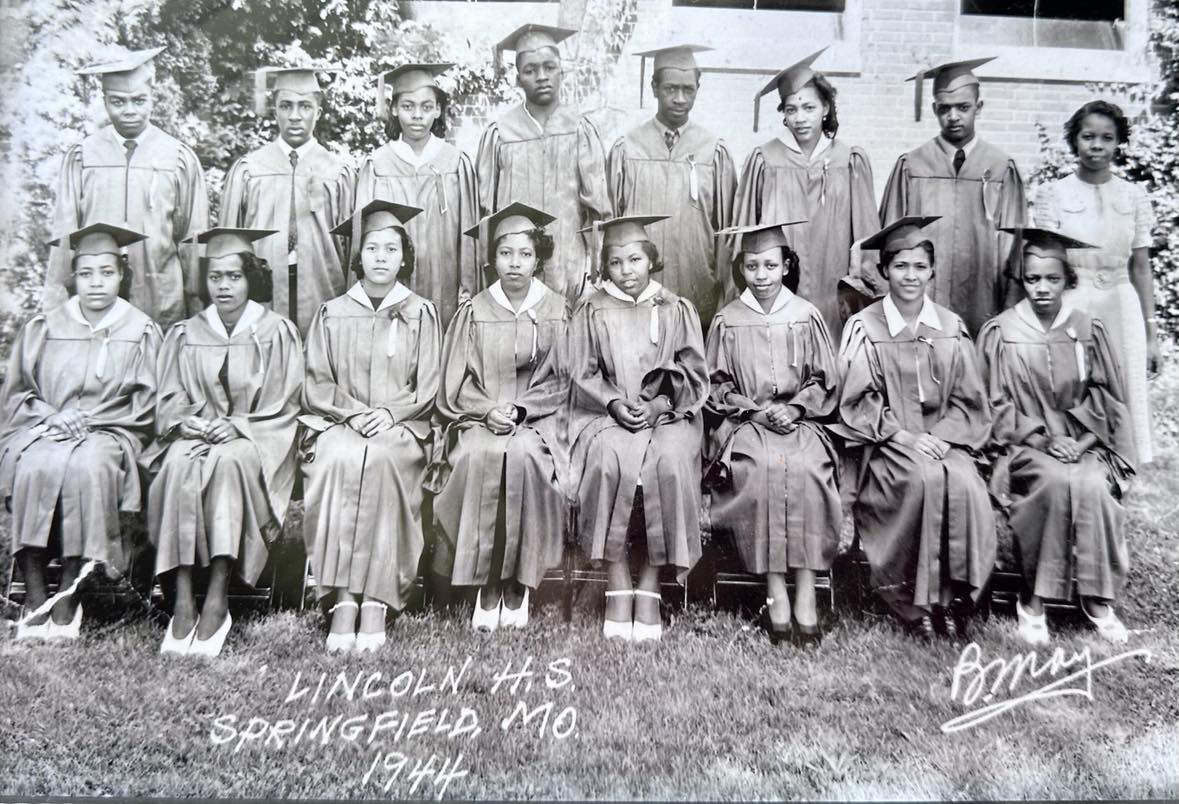
That’s all before he wrapped up his high school studies. A framed black-and-white photo preserves the success of that effort when he and 15 other classmates became alumni of Lincoln High School in 1944.
Today, the former school is known as Lincoln Hall, and is part of the Ozarks Technical Community College campus.
The Philharmonics' rising star
Culp was a young man when the Philharmonics began from the choir at Gibson Chapel Presbyterian Church. The church, located in downtown Springfield but demolished in 2020, was one of Springfield’s historic Black congregations.
“I sung with the church choir, and that’s where the quartet come out of,” Culp says. “We started singing at nursing homes, we did quite a bit of church music.”
Life unfolded rapidly in the coming years. He married and started in on having six children. There was a brief time working in Michigan. That didn’t last long, though, before he came home.
Culp left the Phils for a period during this era of life, but after he returned from up north, they asked him to come back to the group. He said yes, and was back as a member by 1953.
By that time, the group's star was rising higher than it had ever been. They were part of a long-gone civic event called Springfield On Display, which for several years featured “live models in hundreds of Springfield store windows” for “thousands of pedestrians who (jammed) the business district to see the display,” as the Springfield Leader and Press put it in 1951.
Locally, they played at places like the Townhouse, a restaurant on St. Louis Street near the Shrine Mosque, whose owner suggested taking the group to New York to pursue musical opportunities. (That didn’t end up happening: “Only two of us who would do it,” Culp says. “The rest of them said, ‘No, we’re staying home with our wives.’”)
They also performed at churches, nursing homes, at a golf course near Forsyth, and Be Bop Brown’s club outside of town, the latter being one of few clubs led by and focused on the Black community.
“They’d ask us, we’d go,” Culp says of all their opportunities to perform. “Of course, that’s the thing — they never did ask us that much.”
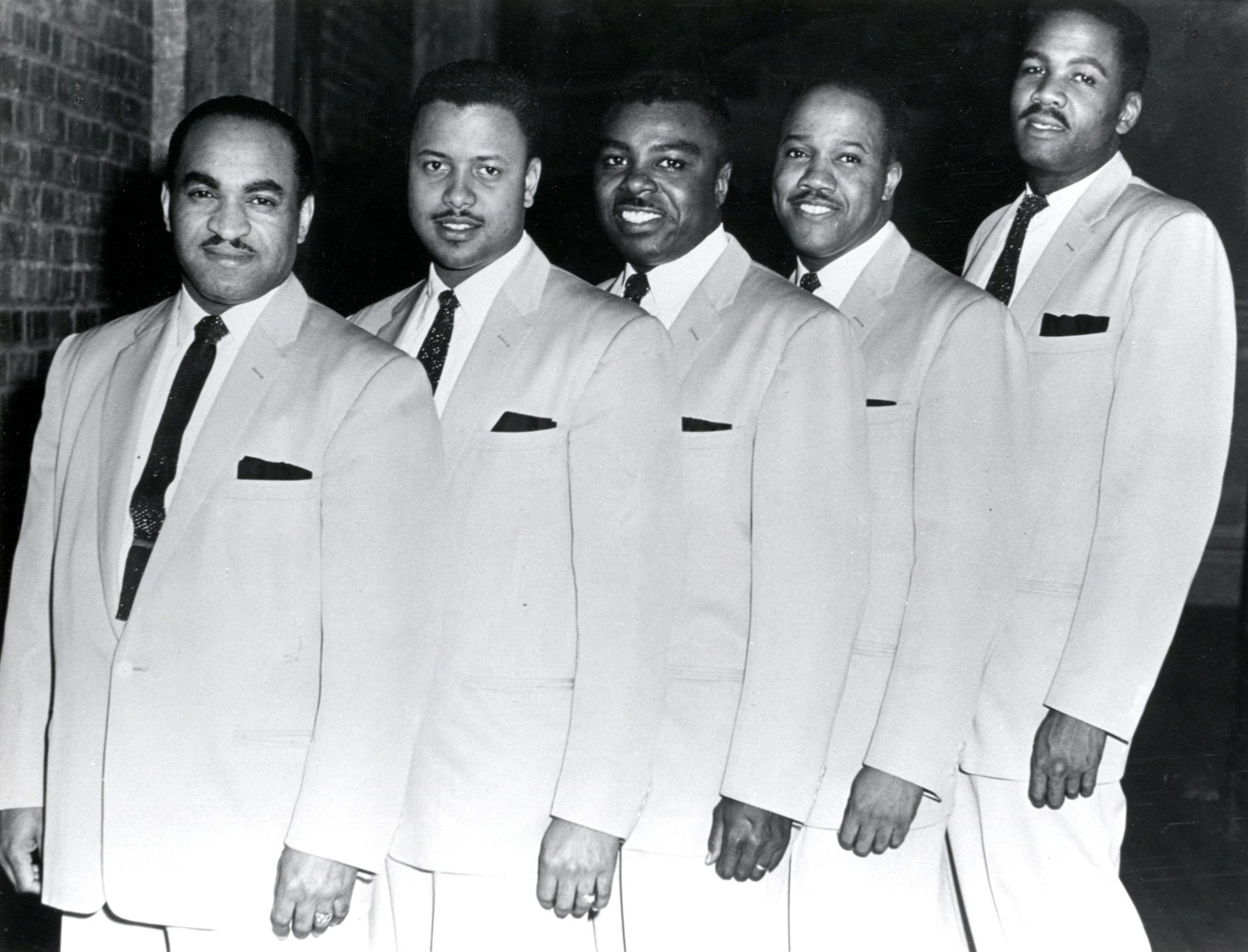
One of the group’s high points was in 1953, when they won the local round of the “Youth Opportunity Show,” a talent competition hosted by Big Band star Horace Heidt — for the second time.
They were also in demand around Springfield for various performances, and at churches and civic events. They regularly hit the radio airwaves on KGBX, and by this time, were described in the paper as a “well-known Springfield Negro quartet.”
TV, too, was in their future: KYTV went on the air in October 1953, and just a few weeks later, so were the Philharmonics when they joined local bandleader Paul Mitchell’s show on Tuesdays and Thursdays.
The group’s growing notoriety led to them being asked to appear on the “Ozark Jubilee,” a country music show that began in 1954. It debuted as a radio show, but was on national TV by the next year.
“When KY3 came on in late 1953, they were big stuff in Springfield,” says Wayne Glenn, a historian and expert on the “Ozark Jubilee,” of the Phils “(They) were asked to sing on KY3, which needed talent to fill up air space. From that, it was a natural move to the locally produced Jubilee.”
The Phils' were on the Jubilee — which was broadcast on ABC — by early 1955, when the show was actually being filmed in Columbia while technology caught up to Springfield.
According to “Remembering the Ozark Jubilee,” it was Si Siman who actually asked the Philharmonics to perform.
“They became regulars from there on, appearing frequently — and ‘on standby’ the rest of the time to fill in when needed,” the book notes.
The ‘Ozark Jubilee’ days
Now more than 70 years since it began, it’s hard to imagine the energy around the “Ozark Jubilee.”
For years, Saturday evenings featured big-name country stars like Chet Atkins, Brenda Lee, Patsy Cline and Pat Boone alongside homegrown talent. At the heart of it all was Red Foley, a country music superstar from Nashville, who Siman also recruited to be the show’s emcee.
Looking back, Culp remembers the shows and stars that the Phils met along the way and across the stage.
“Most of them were real nice,” he says, mentioning names like Foley, Porter Wagoner and Speedy Haworth. “I liked most all of them because at that time we were doing just any kind of song we could, which was country music. We did some of Elvis Presley’s songs. We did popular songs, we did church songs. It was fun. Most everything we did I myself enjoyed it, because I loved music at that time.”
The Jubilee was broadcast live from the Jewell Theater, a long-gone landmark that stood near the northeast corner of McDaniel Street and Jefferson Avenue. It welcomed a studio audience every Saturday evening for both the TV show as well as another performance done purely for the live audience.
“Always, before I’d go on stage, I was so nervous I didn’t know what to do. But after I got out on stage, it all went away,” Culp says. “I like music, and to me it was just great. It was great to go on stage.”
The Phils regularly appeared on the show for years, expanding their music from gospel to country.
They also spent time in the recording studio. One song, written by Phils member Eldridge Moss, was called “Teen Town Hop.”
“That record was played and was going good, but the background people that was backing us hadn’t paid their (union) dues,” says Culp. “So they blackballed the whole thing.”
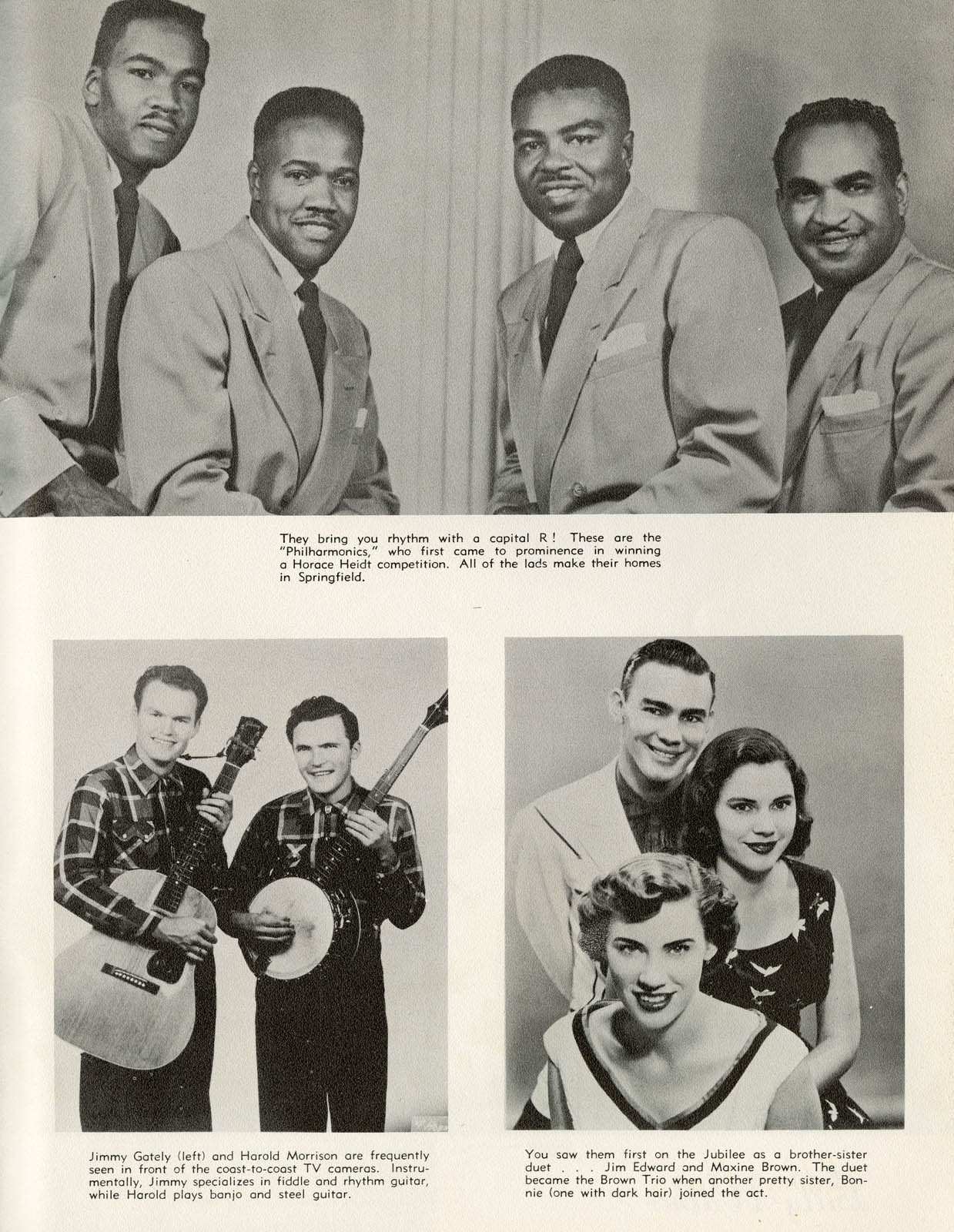
They also traveled across the country for gigs, including on troupe trips organized with various cast members who regularly appeared on the Jubilee. At least some of those were handled by Top Talent, a subsidiary of the “Ozark Jubilee” that was formed to manage bookings for celebrities.
Tom Peters, dean of Missouri State University Libraries who is writing a book on the Jubilee, says that the show’s talent fell into figurative buckets.
“There were some that were clearly on the way up — like Brenda Lee and Porter Wagoner,” he says. “They just used it as a springboard. Then you had people like Slim Wilson and Speedy Haworth who could’ve gone to the big time, but chose not to.
“Then you’ve got people like the Phils that had more talent than they ultimately got acknowledgment for.”
Facing challenges in Springfield to beyond
While Culp looks back on this time period fondly and sees it as a time of success, it was in spite of a segregated reality not felt by most of the Jubilee’s cast and leadership.
There were times on the road, when there were challenges about where to eat or sleep. On one trip to Kansas City, Culp shares, the leader of a hotel said the Phils couldn’t stay.
“We traveled in buses. That first night, we were in Kansas City and, well, they didn’t want us to stay in the hotel,” Culp recalls, but says that one of the leaders of the trip said in solidarity it was all-or-nothing.
“He said, ‘Well, if you don’t want them — they’re part of the troupe — none of us will stay.”
The hotel representative relented. However, similar attitudes and issues were waiting in Springfield, where segregation was still very much in place throughout the 1950s.
In 1958, the Springfield Chamber’s Civic Affairs Committee completed a survey of restaurants, hotels, motels and theaters in the city to see if they would allow Black patrons. The vast majority did not or did so in only certain instances, such as “to go” orders or if a Black servicemember was traveling through town.
When it came to movie theaters, the drive-ins surveyed allowed Black patrons. However, just one indoor option — the Landers — allowed Black customers, and that was only on certain days of the week and only if they sat in the second balcony.
The Jewell wasn’t included on the survey, presumably because it wasn’t being used as a traditional theater at the time of the Jubilee. Whether Black individuals were allowed to attend or not, images from Jubilee events show they were not a significantly visible portion of the audience, Peters says.
While Culp looks back positively on the experience, he also shares moments he recalls being unequal in the Philharmonics’ participation, too.
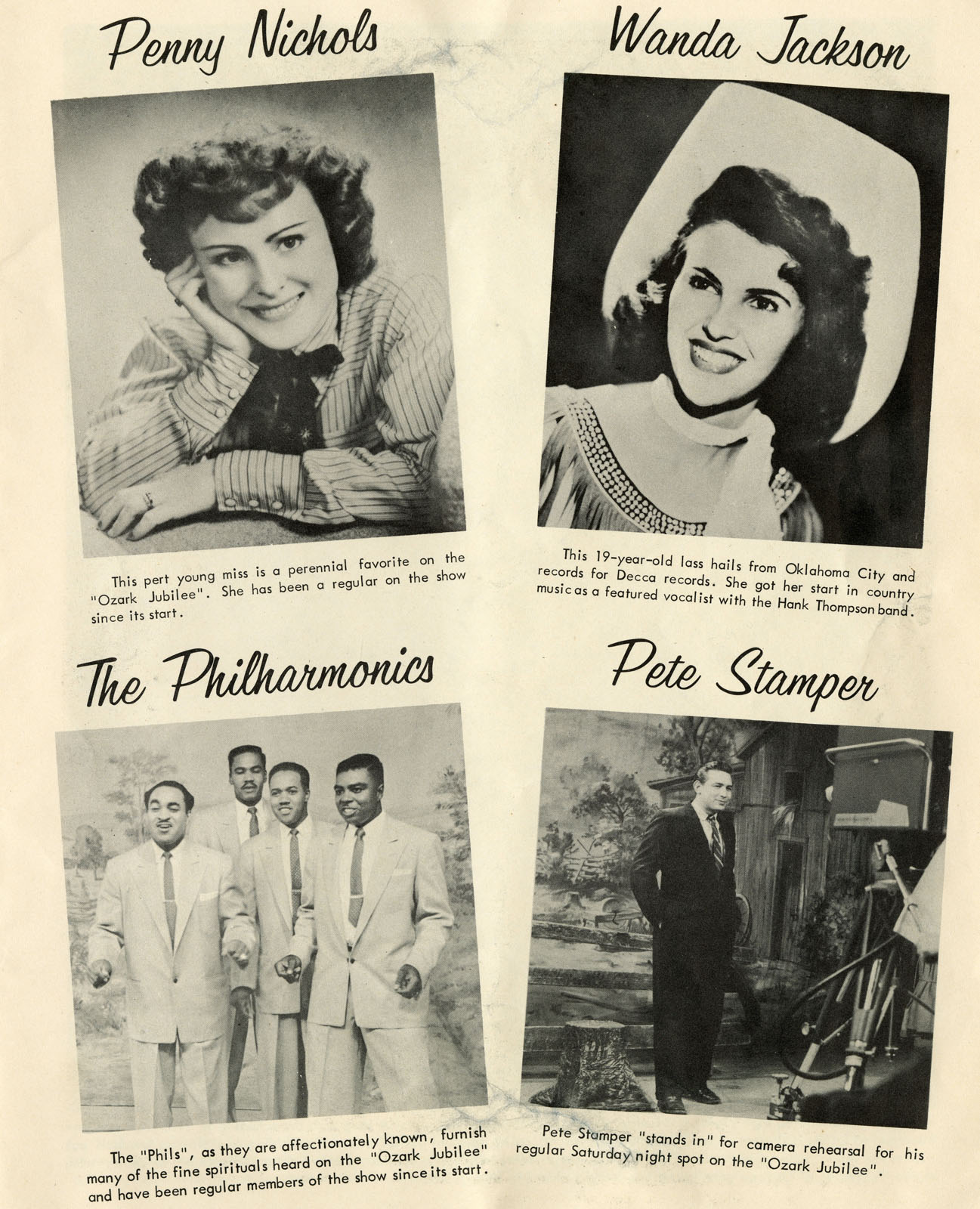
“I can remember when they had the big show for people, and different record companies was signing different ones up,” Culp says. “But when they came to the Philharmonics, they said, ‘No, we need them here.’
“Record companies were signing different stars, but we were the only ones who didn’t get an option.”
Just who “they” is in this context is fuzzy, but the bottom line is that Culp recalls the Phils’ future being more controlled than perhaps other artists experienced.
Another example came with regard to Wagoner’s song “Company’s Coming,” which featured an elaborate interlude of clapping — which was initially provided by the Phils, Culp says.
“We did the background on it. It wasn't singing background — it was sort of a clap,” he explains of the intricate rhythm routine that the group provided. They had other experiences with Wagoner, he says, who wasn't well-known when he began his time on the Jubilee after being discovered in West Plains working as a meat cutter.
Regardless of why or who made the decree, Culp says the Phils weren't allowed to work with Wagoner when his career really began to take off.
“We were on that first record but after that: no,” he says of future possibilities. Those sorts of roadblocks, however, didn't keep the group from pursuing its passion.
“A lot of places we couldn’t go to eat, a lot of places we couldn’t go to stay,” Culp reflects. “But that didn’t stop the group. It didn’t matter to us; we didn’t get upset about it. We just went on.”
Culp's life evolved after the Phils
The Phils departed from the Jubilee before the show evolved and ultimately ended in 1960.
While the vocal group didn’t technically end, a big blow came in the early ‘70s, when Clarence “Chick” Rice died. As other members also passed away, there were efforts to revive the group, but they never really took hold.
Culp’s life evolved in other ways, too. He ultimately became father to seven children, including his stepson — and was married four times between two women.
In addition to his musical career, he made a living in a variety of ways. There was time, as a young man, when he was employed by the VA — which briefly took over O'Reilly General Army Hospital — and later, at Lily Tulip. There was that time in Michigan, too.
Ultimately, he landed as an employee of the United States Postal Service, where he began as a custodian. Later, he became a press operator, who was responsible for “canceling” stamps on mail. He retired from that position.
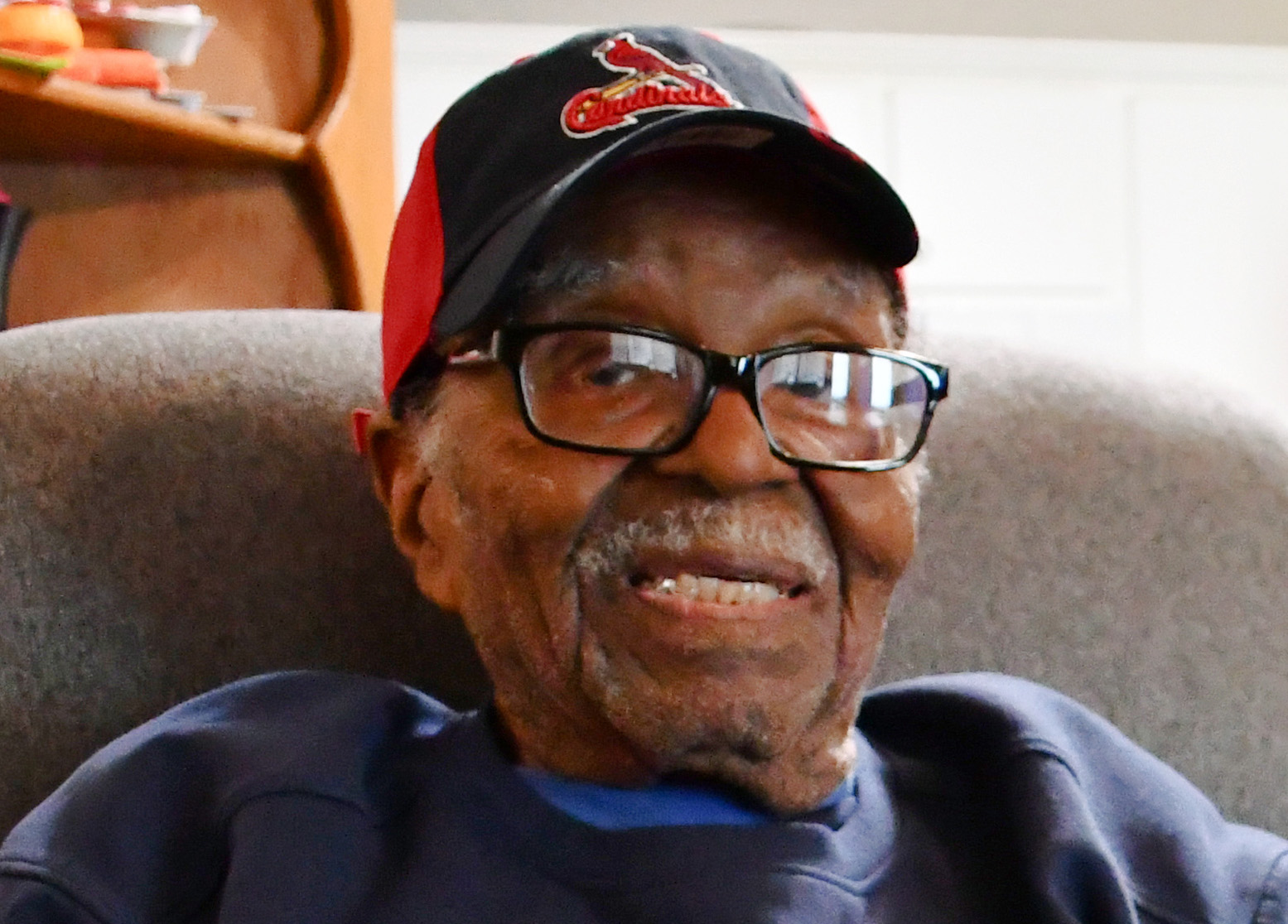
Aside from his time in the military and the short stint up north for work, Culp has lived all of his 100 years in the Ozarks and looks back at a radically different world. He says it’s changed a lot — for which he’s pleased, “even though I didn’t get the benefits,” he says.
One area about which he shares is regarding education.
Beyond that memory of multiplication tables, he talks more of math — particularly algebra, where he could “look at that algebra and tell you what the answer was.”
And while he thought about higher education, it just ultimately didn't happen.
“I did at one time, especially when I come out of service,” he says of pursuing college. “I thought about it, because at that time they would help pay your way. But I didn’t.”
“When I was coming up, being Black you didn’t have a chance unless you was extremely smart — and I wasn’t,” he says.
Yet even without a degree, by being an example, the impact he made is felt. One example is through the late Nedgra Culp, his daughter, who carried on the family's musical tradition as a performer in Branson who ultimately led her own show.
But the Philharmonics’ legacy lives on in other ways — including YouTube, where Missouri State University Libraries has led the digitization of episodes of the Ozark Jubilee. Today, not only people from across the country but also around the world can see the Phils perform.
They don’t necessarily know the circumstances that they overcame to get where they were. They simply can see the Phils for who they were, and what they did: Together, for the show, and as part of history in a world that is much different today than it was when Culp was born.
As he puts it, “It’s changed quite a bit, and I’m glad.”
Editor’s note: Kaitlyn McConnell works as a consultant for Ozarks-related projects with Missouri State University Libraries.



